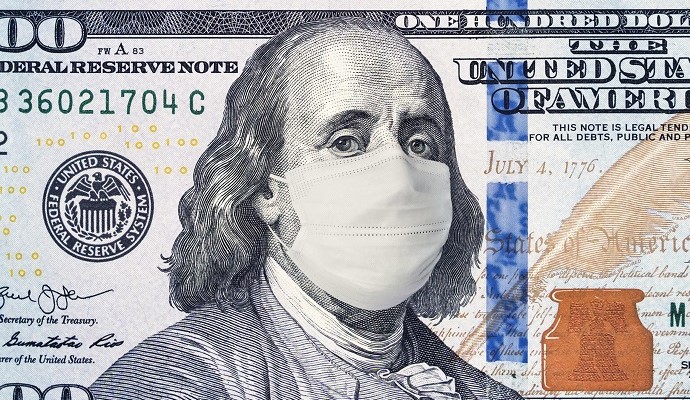Medical Groups At Least A Year Away from Recovering Revenue Losses
Most medical groups and health systems expect to overcome COVID-19 revenue losses in a year or more, but about a quarter are still unsure when or if they will ever return to pre-COVID levels, AMGA reports.

Source: Getty Images
- Most medical groups and integrated health systems will need at least another year to recover from the revenue losses brought on by the COVID-19 pandemic, according to survey results from the American Medical Group Association (AMGA).
About 41 percent of health system respondents and 35 percent of those from independent medical groups said revenues will not return to pre-coronavirus levels until at least the second quarter of 2021, revealed the surveys of nearly 100 leaders. Respondents came from 59 of the nation’s preeminent integrated health systems and 36 independent medical groups.
But for a significant portion of integrated health systems and independent medical groups, it is still unclear when they will recover from COVID-19. Nearly 23 percent of health system respondents and 28 percent of medical group respondents said they could not pinpoint when their revenues will return to pre-coronavirus levels.
“Health systems and medical groups are operating under a cloud of financial uncertainty that threatens their ability to continue to deliver the best care to their communities,” said AMGA President and CEO Jerry Penso, MD, MBA.
COVID-19 was – and continues to be – an unprecedented public health emergency turned financial crisis. While the healthcare industry was undoubtedly the most impacted by the pandemic, the industry was also one of the hardest hit financially.
READ MORE: How COVID-19 Imperiled Physician Practices, And How to Save Them
An overwhelming majority (90 percent) of medical groups and integrated health systems experienced revenue losses of 25 percent or more during the pandemic, AMGA reported. Of these respondents, nearly 40 percent of the medical groups and 20 percent of the integrated health systems belonged to the “or more” category, with leaders reporting monthly revenue losses of over 50 percent.
With such dramatic revenue losses, several groups have already run through cash reserves, Penso said.
“This pandemic has changed the expense makeup for providers, who now are funding new PPE and telehealth infrastructure costs while simultaneously dealing with significant revenue losses,” he stated.
The federal government has stepped in to help healthcare providers manage the new financial landscape during the pandemic. The Coronavirus Aid, Relief and Economic Security (CARES) Act established a Provider Relief Fund that will provide $175 billion in relief funds to hospitals and other healthcare providers impacted by the pandemic.
States have also started to resume normal activities as confirmed COVID-19 cases decline, meaning providers can restart in-person visits to bring in revenue.
READ MORE: Coronavirus May Reshape Investment, Value-Based Reimbursement
However, new survey data indicates that additional relief will be needed to support providers during the next phase of COVID-19.
Medical group and health system leaders are expecting expenses to continue to increase compared to pre-coronavirus levels, AMGA found. Most of their organizations (92 percent of health systems and 97 percent of medical groups) anticipate an increase in expenses for personal protective equipment (PPE).
Another 87 percent of health systems and 91 percent of medical groups also expect expenses related to telehealth infrastructure to rise compared to pre-coronavirus levels.
“We continue to urge Congress to provide additional funding to stabilize the front lines of the COVID-19 crisis,” Penso stated.
Last week, AMGA urged Congress to pass another COVID-19 relief package. In a letter to House and Senate leaders, the association pushed for continued support of the Provider Relief Fund and the reinstatement of Medicare’s Accelerated and Advance Payment Programs, which provided upfront reimbursements to providers at the start of the pandemic.
READ MORE: Key Considerations for Reopening Healthcare Facilities Amid COVID-19
Additionally, AMGA advocated for the permanent relaxation of rules governing telehealth utilization.
When healthcare organizations shut down elective, non-emergent care for the safety of their patients and providers, many turned to telehealth technology to remain engaged with patients during shelter-at-home and social distancing periods. Regulatory flexibilities enabled organizations to flip the switch in a matter of days or weeks. However, those flexibilities are slated to expire at the end of the public health emergency.
“Given that telehealth has become the new ‘norm,’ we request that these Medicare telehealth waivers be extended permanently,” AMGA told Congressional leaders. For the greatest impact, the association requested that the maximum number of providers be able to offer telehealth, including those across state lines.
Payment parity for telehealth services would also support cash-strapped providers adapt to the “new normal,” other industry groups have said.
“[C]hanges in payment policy address some of the biggest issues facing physicians as they struggle to make up for lost revenue and provide appropriate care to patients,” the American College of Physicians wrote in a June 4th letter to CMS Administrator Seema Verma.
The College recommended that CMS maintain payment parity between audio-only evaluation and management (E/M) claims and their in-person equivalents, as well as between all telehealth and in-person visits after the public health emergency has ended.
“This extension should last at least through the end of 2021, or until such a time when effective vaccines and treatments are widely available, with an option to extend it even further, or consider making permanent, based on the experience and learnings of patients and physicians who are utilizing these visits,” the letter stated.
